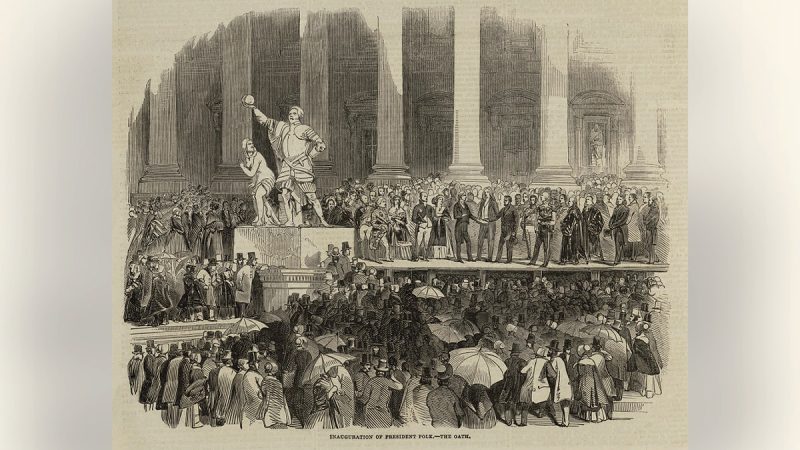Millions of people across the country are expected to tune in to President-elect Trump’s second inauguration ceremony. Television networks, online publications and social media outlets are preparing for the big event. The way inaugurations have been presented to the public has changed drastically over the years.
‘We must think big and dream even bigger,’ Trump said during his first inaugural address in 2017.
Tens of millions of people watched his first address in real time – both on television and through online streaming. But inaugural addresses and analysis of the speeches were not always available immediately. In 1789, when George Washington was sworn in for the first time, his speech was not available to the public until several days later.
Thomas Jefferson became the first president to have his inauguration speech printed in a newspaper the same day he gave his address in 1801. The National Intelligencer printed the speech on the morning of Jefferson’s inauguration.
James Polk was the first president to have his address reported by telegraph. It was also the first time a speech was shown in a newspaper illustration, by the Illustrated London News.
Drawings were the main visual for inaugurations for another 12 years, until photography became more frequently used. James Buchanan was the first president to have a photograph taken at his swearing-in. Another 40 years later, video was used to record inaugurations for the public.
William McKinley was the first president to appear on a movie camera during his inaugural address in 1901. Only silent films were available then, but that would change over the years as inaugural addresses began to incorporate audio.
In 1921, Warren Harding was the first to use loudspeakers to address the crowd attending his inauguration in person. Four years later, Calvin Coolidge was the first to have his inaugural broadcast nationally by radio. The White House Historical Association estimates his 1925 address reached more than 23 million radio listeners. Herbert Hoover gave the first multimedia inaugural. His 1929 address was the first recorded on a talking newsreel.
‘It is a dedication and consecration under God to the highest office in service of our people,’ Hoover said during his address.
After World War II, an increasing number of Americans bought television sets for their homes. By 1949, almost all major cities had at least one local television station, and 4.2 million American homes had TV sets. Harry Truman became the first president to have his inauguration broadcast live that year. More than a decade later, John F. Kennedy had his address broadcast in color for the estimated 500,000 Americans who had color television sets.
‘Ask not what your country can do for you — ask what you can do for your country,’ Kennedy famously said during his inauguration speech.
Ronald Reagan sought to bring the pageantry of inauguration events to Americans across the country. His inaugural committee hosted around 100 satellite inaugural balls that were broadcast in 32 cities.
‘Almost 200 years ago, at the first inaugural, people came by stagecoach. This time, people all over America, millions of people, are attending this one by satellite,’ Reagan said during a ball at the Washington Hilton Hotel.
More than a decade later, Bill Clinton’s second inauguration in 1997 was available on the internet via livestream. Clinton had signed the Telecommunications Act of 1996 just a year before at the Library of Congress.
‘Ten years ago, the internet was the mystical province of physicists; today, it is a commonplace encyclopedia for millions of schoolchildren,’ Clinton said during his inaugural address. ‘As we look back at this remarkable century, we may ask, ‘Can we hope not just to follow, but even to surpass the achievements of the 20th century in America?”
With the growth of the internet, social media use also expanded.
‘We have always understood that when times change, so must we,’ Barack Obama said at his second inaugural address in 2013.
Obama was the first president to join Twitter. His 2013 address generated more than 1 million tweets. According to Pew Research, around 51% of Americans owned a smartphone at the time. When Trump was sworn into office in 2017, that percentage rose to 77%. Cellphone carriers installed extracellular antennas ahead of the address for the massive crowd that would be sharing photos and videos from the day’s events on social media.
When Joe Biden gave his address in 2021, his inaugural committee relied on technology for nearly every aspect of the event. The coronavirus pandemic forced much of Biden’s festivities to move online.
‘The world is watching all of us today. So, here is my message to those beyond our borders: America has been tested, and we have come out stronger for it,’ Biden said during his address.

